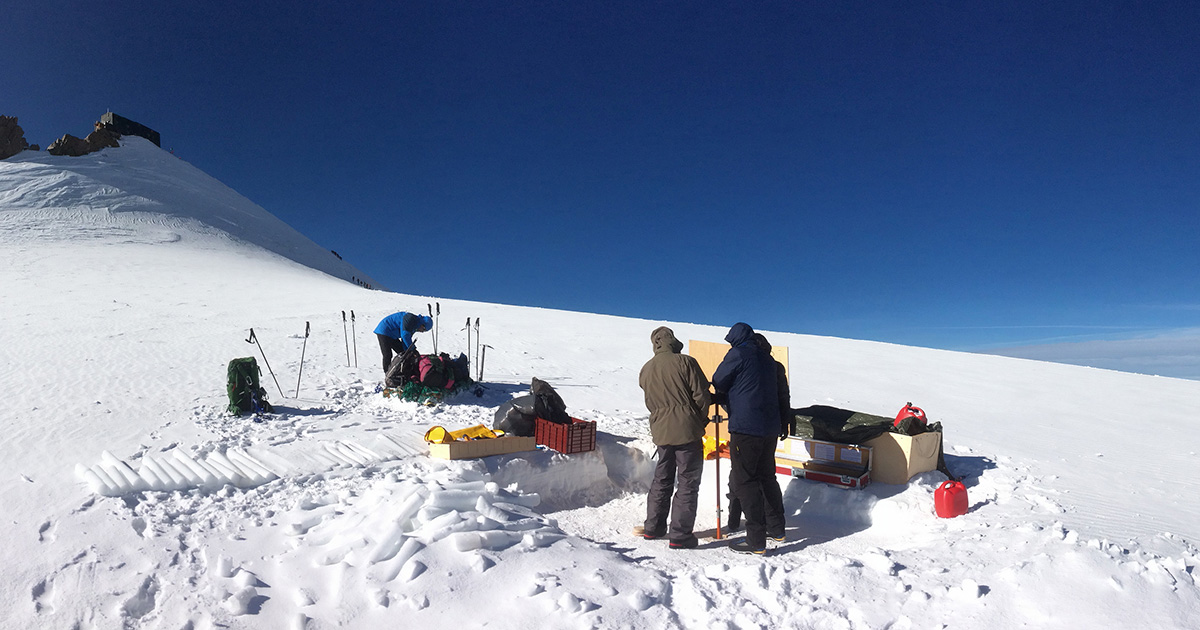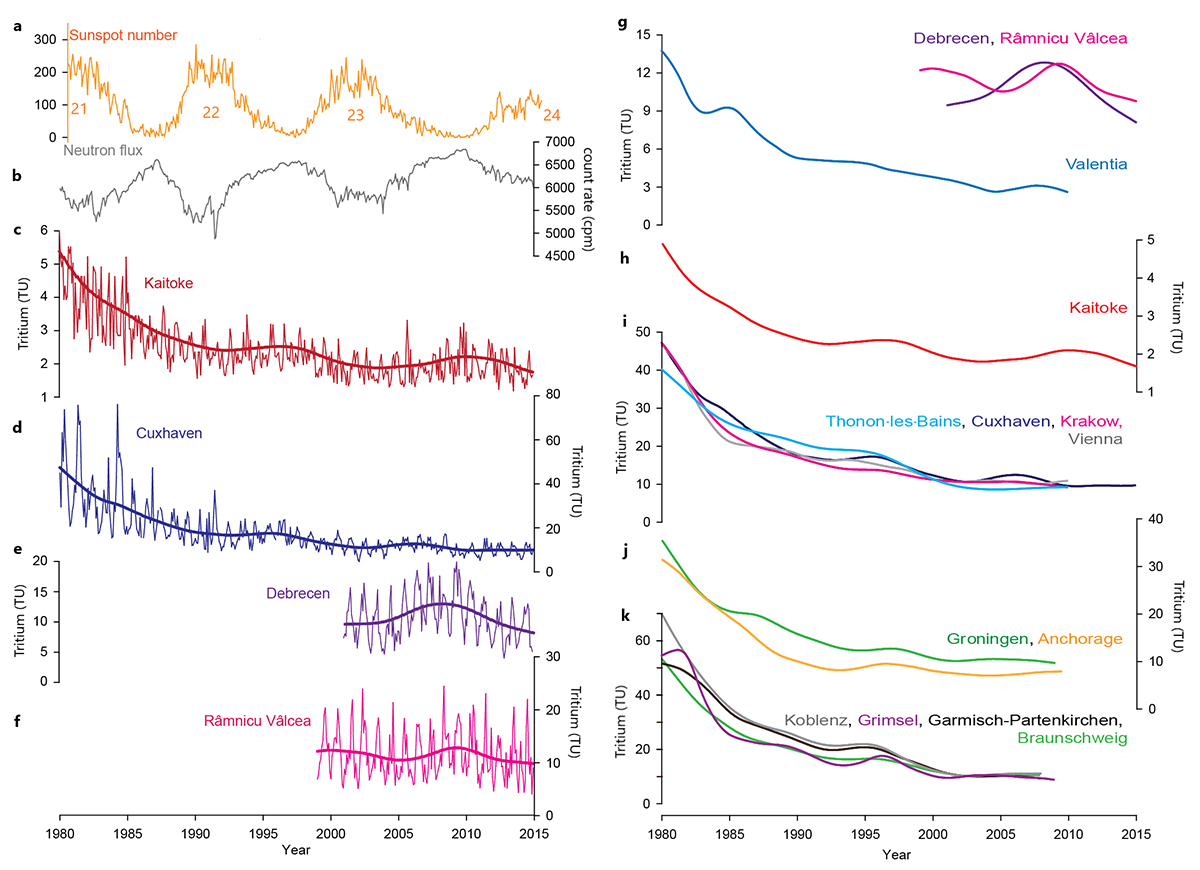ATOMKI Researchers Look for Relationship Between Solar Cycle and Cosmogenic Hydrogen Isotope in Precipitation and Glaciers

ATOMKI researchers look for relationship between solar cycle and cosmogenic hydrogen isotope in precipitation and glaciers

To help confirm this relationship, the researchers intend to further investigate the tritium concentration of precipitation that definitely fell before the nuclear era. Such precipitation includes layers of ice deposited on top of each other from snow falling on the accumulation level of glaciers. In previous collaborations, the researchers had already participated in glacier research examining the age of ice layers by determining tritium concentrations (Shao et al., 2017; Shao et al., 2020), and launched their own expedition to the Swiss-Italian Alps in the summer of 2020 . Drilling was carred out at the top of the Colle Gnifetti Glacier, at 4,453 meters, in order to collect enough ice from a depth of 28 to 33 meters to represent snow that fell from 1930 to 1950. These layers still contain natural amounts of tritium, which are not contaminated with tritium from either hydrogen bombs or nuclear power plants. However, the half-life of tritium is just 12.32 years, and only less than 40% of the already low natural level is found in the ice due to radioactive decay, which means that an extremely sensitive yet accurate measurement technique is required. Measurements of ice cores providing data on individual years are expected to take eight months, as the required sensitivity does not detect radioactive decay of tritium, but uses sensitive noble gas mass spectrometry to determine how many 3He daughter products are formed from the decay of tritium in eight months. As a result, less than one thousandth of the natural level is detectable.
Researchers are also planning to drill a Tibetan glacier in the near future to show that the change seen in the tritium range is not only limited to the Alps, but is in fact global in nature, further reinforcing the relationship between the solar cycle and tritium.
References:
Palcsu L., Morgenstern U., Sültenfuss J., Koltai G., László E., Temovski M., Major Z., Nagy J.T., Papp L., Varlam C., Faurescu I., Túri M., Rinyu L., Czuppon G., Bottyán E., Jull A.J.T.: Modulation of Cosmogenic Tritium in Meteoric Precipitation by the 11-year Cycle of Solar Magnetic Field Activity, Scientific Reports 8 (2018) 12813.
Shao, L., Tian L, Cai Z, Cui J, Zhu D, Chen Y, Palcsu L, Driver of the interannual variations of isotope in ice core from the middle of Tibetan Plateau, Atmospheric Research 188 (2017) 48–54.
Shao, L., Tian, L., Wu, G., Naftz, D., Cai, Z., Wang, C., Li, Y., Palcsu, L.: Dating of an alpine ice core from the interior of the Tibetan Plateau. Quaternary International (2020) 544, 88-95.

